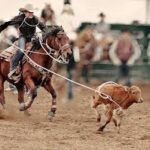 Before I get into my Dakota Roping saddle review, I’d like to ask you a question. How would you like to shave seconds off your time, take home more jackpots, and win the World Series of Team Roping?
Before I get into my Dakota Roping saddle review, I’d like to ask you a question. How would you like to shave seconds off your time, take home more jackpots, and win the World Series of Team Roping?
If you’re reading this, it’s because you love competing in team roping (or individual roping) professionally or recreationally. You’ve decided it’s time to invest in a really good saddle because you know the right saddle is key to your horse’s performance and your ability to rope your calf in 6.3 seconds.
You’re familiar with the Dakota brand because you’ve heard great things about the company. So, you typed “Dakota Roping Saddle Review” in the Google search engine because you want to read a well-written Dakota roping saddle review before deciding if it’s worth plunking down your hard-earned cash.

I don’t blame you.
Equestrian sports are expensive. And because I want you to be well-informed before making such a big decision, I want to give you a review of 3 different Dakota roping saddles….
Then you can decide for yourself.
Dakota Roping Saddle – The Dakota Saddle Company
The Dakota saddlery is well respected in the horse saddle industry due to their high standards. Dakota uses high-quality trees and materials and is never afraid to use new technology to enhance their saddles’ comfort and durability.
Dakota knows the importance of a high-quality, well-fitting saddle. In fact, you may not know this, but so much of a horse’s performance problems are due to back pain because of poor-fitting saddles.
Poor Saddle Fit = Poor Horse Performance
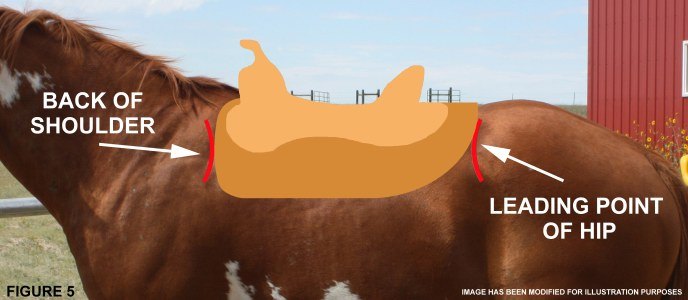
For sports activities like team roping, proper saddle fit is crucial to horse comfort and performance (and yours). Without proper saddle fit, it doesn’t matter how high quality the saddle is, your horse will have performance problems that will keep you from roping your calf in record time.
Take a look at the host of performance problems your horse can have because of a poorly-fitted saddle:
- Front/Hind Leg Lameness, Stumbling and Tripping
- Sudden, decreased speed during timed sports
- Ducking out of turns or turning wide
- Excessive shying or lack of concentration on rider aids
- Inability to travel straight
- Slow to warm up or relax
- Cold-back during mounting
- Reluctance to stride out
- Unwilling or unable to round the back or neck
- Faltering or resisting when making a transition
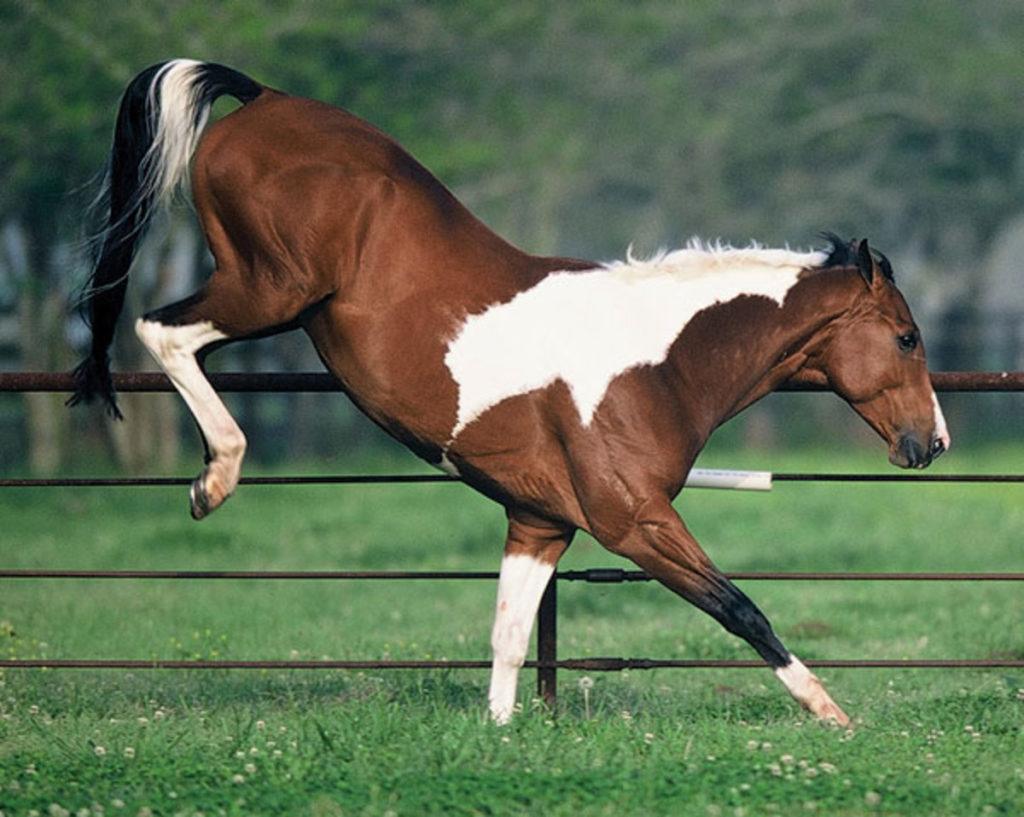
A lot of horse riders tend to think their horse has a “bad attitude” when they exhibit these problems. They don’t know that 99% of the time it’s because the horse’s back is in pain. So, the horse either can’t comply or doesn’t want to.
A good saddle starts with the tree. And the materials with which your saddle tree is made can make or break its quality.
Dakota Roping Saddle – What Kind of Saddle Tree is Best?
The saddle tree of a roping saddle should be made of high-quality wood and either covered in rawhide or fiberglass. The roping saddle should have plenty of flare in order to keep the horse’s shoulders free.
Some saddles are made from plastic. I don’t recommend it because plastic turns brittle after a while, and you’ll end up having to buy a new saddle. In addition to the right materials being used for a saddle tree, the saddle tree needs to be placed correctly on the horse’s back.

Correct Saddle Tree Placement
Many riders mistakenly place the horse saddle in the wrong position. If the saddle tree is placed too far forward. So, when the rope tightens on the horn, the saddle is yanked down hard, and it jams into the horse’s shoulder.
This is especially true for roping horses. With the roping horse, the saddle must be placed behind the horse’s shoulder blade and then use the breast collar to stabilize it.
The Secret to Perfect Saddle Fit
There’s no industry-wide accepted and utilized standard for saddle tree fit. Dakota saddles have found the solution to hard-to-fit horses and horses that change shape frequently.
Many Dakota roping saddles are using Steele Equi-Fit saddle tree, which use what’s called Fit to Be Seen (FTBS), the Equi-Fit saddle tree fit identification and demonstration system.
What the heck is FTBS?
In a nutshell, FTBS has what’s called 9 fit molding forms. These molding forms are made out of fiberglass, which are exact replicas of 9 of the most widely used fits in their Equi-Fit saddle tree line.
So, when a mold is placed on a horse’s back, the fit forms allow you to literally see how the tree will fit the horse’s back without being obstructed by saddle skirts, rigging, and stirrups.
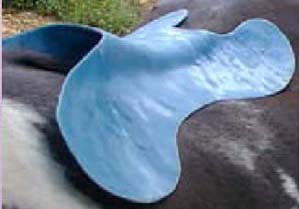
That means you’re getting a more accurate saddle fit for your horse – as opposed to a one-size-fits-all mass manufactured saddle. An accurate saddle fit means that when you’re competing, you’ll be able to communicate with your horse, and he’ll listen because he’s not in pain.
And now, I’m going review 3 of what I think are some of Dakota’s best roping saddles based on the saddles’ functionality for the sport of team roping.
Dakota Roping Saddle Review #1
15″ to 17″ Dakota Penning Roping Saddle 9555
I like the Dakota Penning Roping Saddle 955. It’s strong, beautifully custom made and has all the features needed for a safe and sturdy saddle. And while it’s strong enough for rodeo events like penning and roping, it’s lightweight enough so that your horse can perform very well.
Here are the specs:
- Built on Fiberglass covered trees
- Full quarter horse bars
- The seat is a 16” bicycle seat
- Double Stainless Steel Rigging (won’t rust) Close Contact in-skirt 7/8 position
- 5-Year Warranty
- Material – It’s made from spot carve maple leaf with black inlay Montana Silversmith Conchos
- Weight – 35 pounds
Pros:
- The fiberglass makes this a very strong tree.
- Bicycle seat is padded and comfortable
- Includes a connector strap to secure the flank to the front cinch, which means the saddle will be stable
- Aesthetically pleasing
- 5-Year Warranty
Cons:
I don’t think this is really a “con”, but I tend to favor rawhide covered trees as they last longer. But Fiber-glass covered trees are very strong and extremely durable too. Besides, this saddle has a 5-year warranty.
Dakota Roping Saddle Review #2
15″ to 17″ Dakota Ranch and Calf Roping Saddle 206
I love the Dakota Ranch and Calf Roping Saddle 206 because of the most important feature. The saddle is built on Equi-Fit saddle tree, which uses what’s called, Fit to Be Seen (FTBS). I explained what FTBS is in an earlier paragraph.
Here are the Specs:
- Tree – It’s a wide tree built on Steele Equi-Fit tree covered in fiberglass
- Horn – The horn is standard post 3-3/4″ High 2-1/4″ Cap
- Skirt Length is 27 inches
- Double Rigging with Stainless Steel Dees 7/8″ Position
- Cantle is 4″ High
- Color – Silver Montana Silversmiths with black inlay
- Beautiful Tooling – Mini basket weave with floral accents
- Stirrups are made of leather 3 inches with Blevins Buckles
- Weighs approximately 38 pounds
- Full flank set is included – Dakota’s flank sets include the connector strap to secure the flank to the front cinch.
Pros:
- American made
- Built on Steele’s Equi-Fit tree, allows for an almost guarantee of an accurate saddle fit, strengthened with fiberglass and reinforced at the horn and swell.
- The horn is attached with double reinforcement for the safety of the rider
- Double rigging so the saddle won’t flip up in the back while dallying cattle to the horn
- Comes with entire flank set
- 5-year warranty
- Very Affordable
- Looks great
- Deep hand tooling
Cons:
- Weighs 38 pounds, which is not really a “con” because there are saddles that weigh up to 60 pounds. So this is considered lightweight.
Dakota Roping Saddle Review #3
Dakota Roughout Roping Saddle 502
The Dakota Roughout Roping Saddle 502 is a high-quality saddle. It’s specifically made for horses with a wide, muscular build. It uses full quarter horse bars. The gullet width and height are such that there’s enough clearance for the horse’s withers.
See, in roping, when the horse gallops at high speeds to chase the calf then suddenly stops when the rope tightens, it places an extreme amount of force on the horse’s withers.
That’s why it’s so important that the gullet on a roping saddle clear the horse’s spine completely. A too low gullet would hit the horse’s withers, causing extreme pain during riding.
Here are the specs:
- The tree is made with Steele Equi-Fit
- Fiberglass Covered
- FQH Bars (Wide)
- Horn: Standard Post 3-3/4″ High 2-1/4″ Cap
- Skirt Length: 26″
- Double Rigging, Stainless Steel Dees (won’t rust) 7/8″ Position
- Cantle: 4″ with Cheyenne Roll
- Stirrup Leathers: 3″ with Blevins Buckles
- Weighs approximately 38 pounds
- 5 Year Warranty
Pros:
- Since FTBS is used, you can be sure that the bars will accurately sit over your horse’s back and the weight of the rider will be evenly distributed over the horse’s back
- FQHB means good gullet width and height clearance for withers
- Cheyenne Roll provides handy grip which helps keep your rear in the saddle at the canter
- Double rigging, which means the saddle will be extra stable
- Dees are stainless steel, which means they won’t rust
- 5-year warranty
Cons:
- None really
My Dakota Saddle Review Conclusion
I hope my Dakota Saddle review was helpful. I know I’ve only reviewed just a few of Dakota Roping Saddles, but I picked the ones that I thought had the best technology and features essential to helping you stay secure in your saddle, provide maximum comfort for your horse, shave seconds off your time, and help you win more roping events. Maybe you’re more in barrel racing? Check out our Martha Josey Saddle sale.
If you want to see a full collection of Dakota’s Roping saddles, click here.

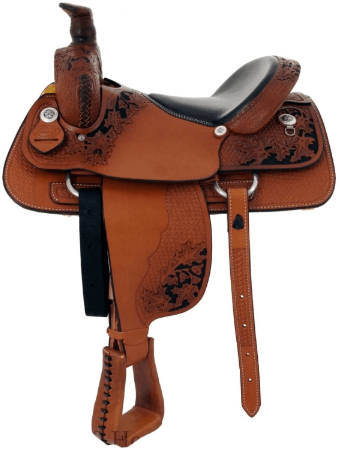
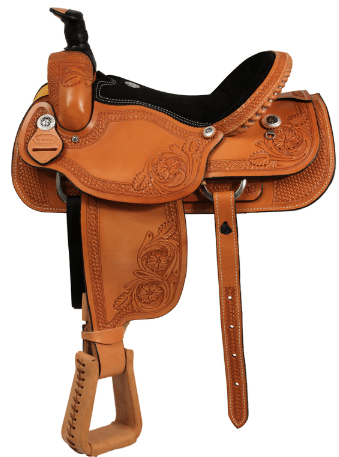
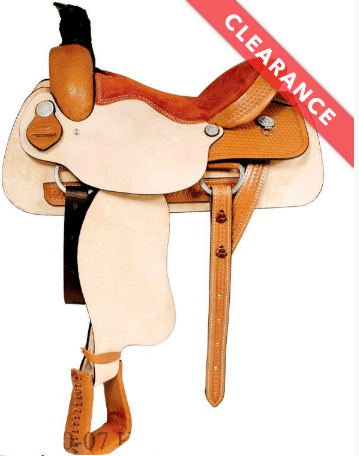
Hi Shalisha. Thanks for this insightful post. When it comes to roping, every detail matters—your horse, your rope, your timing, and yes, your saddle. The right roping saddle doesn’t just keep you comfortable, it can literally shave seconds off your time and help you stay consistent in jackpots. One of the best value choices on the market today is the Dakota Roping Saddle. I love the brand myself. Keep posting these types of articles.
Thanks for your comment Liam. I’m glad you found my post helpful.
Hi Elena. Thanks for stopping by. Personally, I do pleasure riding, not the other kind of riding. But I understand the concept of feeling at 1 with the horse.
Hi Shalisha!
I don’t know anything about this, but it was my pleasure to read your post. It looks like very dangerous, but it the same time I suppose you feel some kind of freedom.
Do you really feel like you are one whole with the horse? I have to try this some day.
Thank you for that education. I really needed it. 🙂
@Igor. I understand. But thanks for stopping by and reading my post!
Hi Shalisha!
What a great article. Unfortunately, I don’t know anything about it, so I am not the right person to comment on your article in a professional way.
I can only say that I can learn a lot out of it. I tried just once to ride a horse and it was a wonderful experience.
I love animals and especially horses.
I wish you a lot of success with your site and more great articles!
Best regards!
@Diane: Thank you so much for stopping by and commenting. I’m so glad to be able to educate horse riders, both novice and experience, about the importance of saddle fit for both horse and rider.
Thank you again for stopping by and commenting.
I only know rodeo through a friends husband. Totally green horn when it comes to this topic.
However, I am very impressed with your site.
And educated on how to take care of your horse by getting the right fitting saddle. Which now makes sense.
Beautiful saddles by the way 🙂
I felt you were very thorough in your reviews and felt like I was being guided by a professional as if I was in a shop.
I also felt, which is important to me, that you cared about the animal and wanted the best for them too. Better performance.
Loved the quality of your site.
You really know your stuff and anyone would be very well informed before making a decision.
Great job!
Its been a pleasure visiting.
Di 🙂
@Andrew: Thanks for stopping by and commenting. Yes, there are different types of saddles for different disciplines. Many people don’t know that there are different saddle types for different riding disciplines, that’s why I wrote the blog post. Thanks for commenting.
I have watched the rodeo on TV and it looks like a very dangerous sport. i was not aware that there were different types of saddles to choose, i will have to update my knowledge a bit more.
@Balley: Yes, this info is really important. I’m glad you found it helpful!
I never knew how important this could be! Awesome content that I’ll be sure to spread 🙂
Great review! I ‘m gonna start riding next year. Hopefully! That’s why I’m starting researching saddles. Would you recommend them to a beginner?
And btw, does team roping have an age limit to start? I kind of liked it from your photos! 🙂
Hi Curtis. Thank you for your feedback. I’m hoping to raise awareness around the issue of saddle fitness. I’m glad you found this helpful.
I haven’t ridden a horse for a few years, but I grew up on a farm in Oklahoma and we had horses. I agree with your idea that the saddle needs to fit properly so the horse is not in pain. If they are comfortable, most likely you will be as well. I also prefer rawhide because it breaths some, where the fiberglass doesn’t. This makes the saddle give a little on the horse as well. This is a lot of useful information.